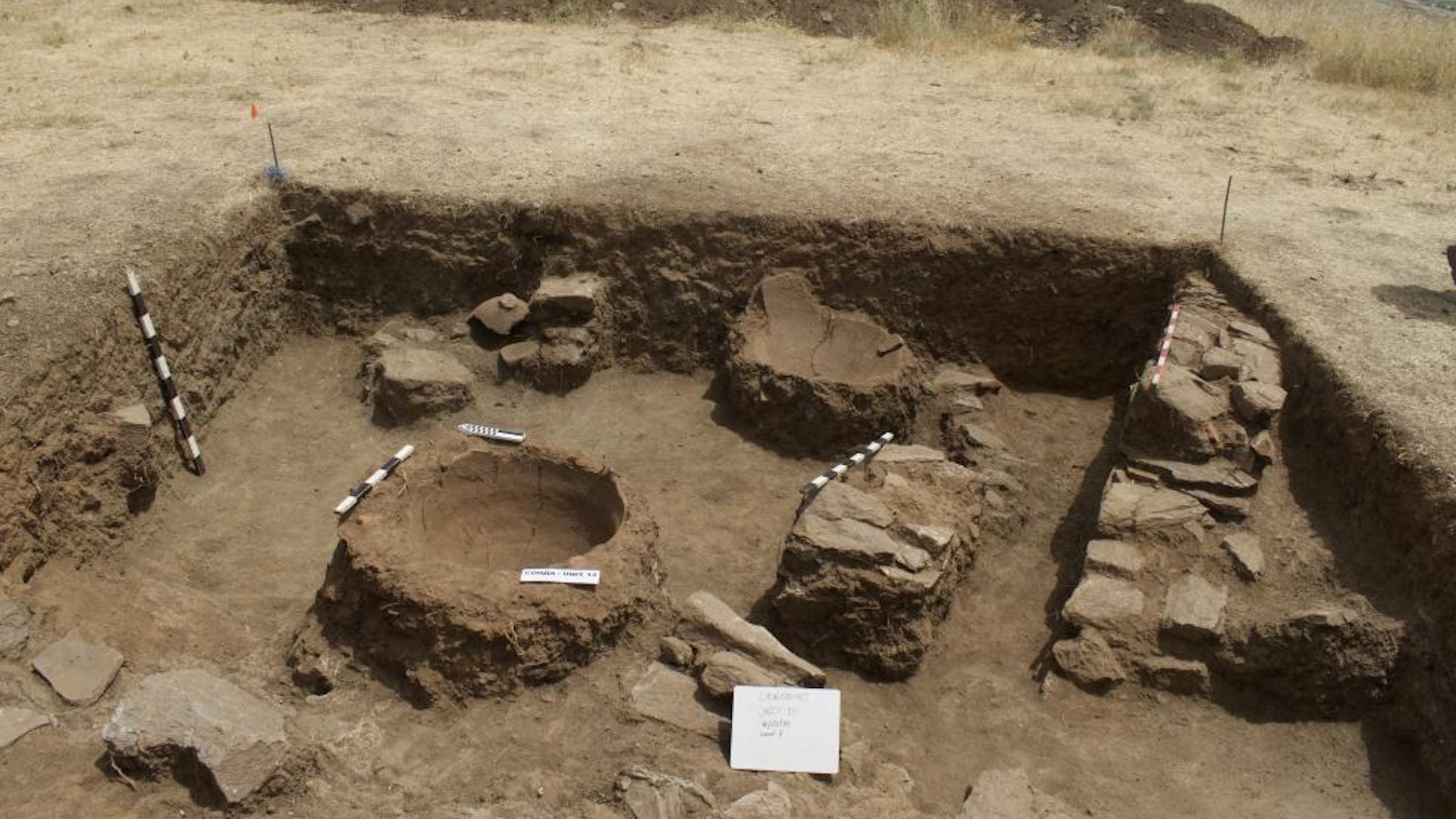Giant, synchronized swarms of locusts may become more common with climate change
Locust swarms can arise from several locations at once. Research has linked these dramatic events to bouts of heavy rain and wind — and that's not good news under climate change.

Heavy wind and rain may be triggering widespread, synchronized desert locust outbreaks in key breadbasket regions of the world, new research shows. And the range of these ravenous, crop-stripping locusts could expand up to 25% due to climate change.
The study, published Wednesday (Feb. 14) in the journal Science Advances, is the first to show a robust link between large-scale, synchronous locust swarms and specific weather patterns.
The scale of these megaswarms is astounding: A single swarm can contain tens of millions of insects and span 925 square miles (2,400 square kilometers). Outbreaks — which occur mainly in North Africa, parts of the Middle East and Asia — can, in just one day, decimate thousands of acres of farmland, and strip crops of enough food to feed 35,000 people.
Sometimes, outbreaks occur in multiple locations at once, causing crop destruction and food insecurity on regional scales. For example, in 2003, four separate outbreaks started simultaneously in Mauritania, Mali, Niger and Sudan and spread to several other countries, causing an estimated $2.5 billion in crop losses over the next two years.
Understanding the triggers of these events could help farmers predict, and avoid, catastrophe. But researchers have struggled to pinpoint the drivers.
To identify them, the study researchers reviewed a large database from the Food and Agriculture Organization, part of the United Nations. The database tracked the number of locust outbreaks across 36 countries and a 35-year period between 1985 and 2020. The team combined this information with meteorological data on indicators such as temperature, wind speeds and rainfall.
They found "a strong coupling between locust occurrence and climate conditions through our analysis," Xinyue Liu, a doctoral candidate at the National University of Singapore and lead author of the new paper, told Live Science. Specifically, the meteorological data showed that locust outbreaks often hit more than one country at a time and tended to coincide with periods of intense regional rainfall and wind.
Sign up for the Live Science daily newsletter now
Get the world’s most fascinating discoveries delivered straight to your inbox.
One theory holds that locust eggs, which are laid en masse in the ground, require high levels of soil moisture to develop and hatch, Li explained. Heavy rains also boost plant growth, providing lush crops and other vegetation as a ready food source for hatchlings, which then grow and take to the sky in swarms.
And heavy winds can help to carry locust swarms over large distances to start outbreaks in new places.
The new research provides a disturbing view of the future under climate change.
The researchers modeled different possible climate change scenarios between 2065 and 2100, where lower or higher emissions could lead to less or more future warming.
"Even under a mitigated scenario with dramatic carbon emissions cut, there will still be at least a 5% increase in locust habitat," and existing hotspots in Africa and Asia will continue to experience swarms, said study researcher Xiaogang He, an assistant professor of civil and environmental engineering at the National University of Singapore, told Live Science. In the business-as-usual climate scenario, an expansion would push locusts into new, previously uninhabited regions, such as western India, Iran, Afghanistan and Turkmenistan.
"Given the critical roles of Africa and South Asia as global breadbaskets, concurrent locust infestations have the potential to trigger widespread crop failures, jeopardizing global food security," He said.
He hopes the findings will highlight the interconnected nature of locust outbreaks. Tackling the problem regionally, instead of country by country, could help scientists better predict locust outbreaks, which could, in turn, inform early-warning systems. Those could help farmers prepare — for example, by harvesting crops early and storing the food, or covering crops with locust-proof nets.
Editor's note: The spelling of Xinyue Liu's name and title of Xiaogang He have been corrected in this article.

Emma Bryce is a London-based freelance journalist who writes primarily about the environment, conservation and climate change. She has written for The Guardian, Wired Magazine, TED Ed, Anthropocene, China Dialogue, and Yale e360 among others, and has masters degree in science, health, and environmental reporting from New York University. Emma has been awarded reporting grants from the European Journalism Centre, and in 2016 received an International Reporting Project fellowship to attend the COP22 climate conference in Morocco.









